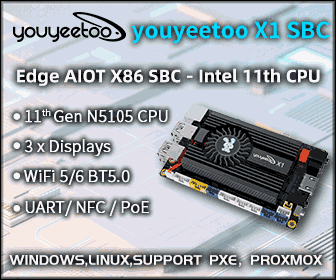Nextion 2.4″ and 4.3″ UART TFT Displays Come with a Drag and Drop UI Editor (Crowdfunding)
You may want or need to add a small TFT display to control your devices, and it may not always be easy to interface with the hardware, and desiging the user interface may be time consuming. ITEAD Studio latest project, Nextion TFT HMI touchscreen displays, aims to simplify connection with a simple UART interface, and make UI design easier with their Nextion Editor that allows developers to create a user interface without coding. Two models are available: Nextion-2.4″ 2.4″ display with 320×240 resolution Refresh rate: 80 ms 4MB flash 4-pin UART interface Micro-SD card slot, GPU, resistive touch sensor. Dimensions – Board: 74.43 x 42.85 x 3.32 mm; display: 60.78 x 42.62 mm Power Consumption – Sleep: 20 mA; active: 90 mA Nextion-4.3″ 4.3″ display with 480×272 resolution Refresh rate: 20 ms 16MB flash 6-pin UART interface Micro SD card slot, GPU, RGB driver, RGB buffer, resistive touch sensor Dimensions […]




